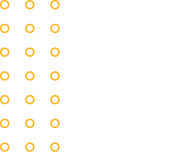Sustainability Incentive Model
IBM Danmark
for
Arla
Kategori :
Type :
annoncoer


We, at Arla Foods, are proud of being part of the dairy industry and bringing nutritious and tasty dairy to the world, but also acknowledge that dairy production emits CO2e and contributes to climate change. As one of the world’s largest dairy producers, we have a responsibility to do our part in reducing our negative impact on the climate and the nature surrounding our farms.
Most of the dairy industry’s greenhouse gas (GHG) emissions happen on farm. At Arla, the target is to reduce CO2e emissions from farms by 30 per cent per kilo milk by 2030.
To accelerate the reduction of GHG emissions and to encourage behaviours beneficial to the natural environment, we have developed a point-based Sustainability Incentive Model. The model rewards the farmer owners for their work to reduce their climate footprint and improve protection of nature and biodiversity. Simply put, the more they do the more they are paid for their milk.
Through the Climate Check tool we have been collecting carbon footprint data from individual Arla farms since 2020. This means that we now have the largest externally verified dataset on dairy production across seven countries ever collected, which could be leveraged for the new Sustainability Incentive Model. This extensive dataset gave us the opportunity to help each individual farmer pinpoint where their efforts are best prioritised to reduce their emissions as effectively as possible, and at the same time improve the profitability of their milk.
We saw a need for a digital solution to support this journey. Dealing with a very diverse user-group with different levels of IT Maturity made it important to create an easy-to-use solution that could convey a highly complex challenge in a simple way.
The Sustainability Incentive Model is a point-based model that rewards past and future climate and environmental sustainability activities – and includes many options for farmer owners to choose from. Activities lead to points and every single point leads to a small amount of money on the milk price. The activities that have the potential to have the biggest improvement potential for climate and nature will lead to the most points – and therefore also the biggest financial incentive.
The levers that we’ve included in the Sustainability Incentive model are founded on data from our climate checks and consultancy from external experts. The levers aim to motivate the activities that we’ve identified as the potentially most impactful, feasible and cost-efficient for Arla’s farmer owners to lower their farm’s carbon footprint and improve protection of nature and biodiversity towards delivering our 30% CO2e reduction per kilo milk that we’re working towards by 2030 compared to 2015. Feasibility is defined as e.g., technological maturity, availability and scalability across farms. The model as a whole has been reviewed by agricultural experts from SEGES who concluded that the model will lead to greenhouse gas reductions per average kilo milk produced at our owners’ farms meaning that the carbon footprint of the milk pool as a whole will be reduced.
Farmers are rewarded points for the activities that contribute (some directly and some indirectly) to lowering the farm’s carbon footprint and improving protection of nature and biodiversity. In total, there are currently 19 areas (we call these levers) that farmers can score points within.
We decided to build the solution on top of the existing digital platform for farmers, utilizing the existing foundation that the farmers know and trust. The concept was developed together with farmers, sustainability experts, designers, and developers to ensure all angles were covered. The purpose of the digital solution is to provide farmers with an overview of their current and future points - and allow them to submit documentation as proof for additional sustainability activities implemented on farm. Furthermore, the platform provides farmers with the needed details behind the focus areas (levers) and specific guidelines on what is required to score more points and reduce emissions.
The Sustainability Incentive Model was approved by Arla’s Board of Directors in September 2022, the supporting digital solution went live in January 2023 and the sustainability incentive was paid out to farmers for the first time as part of July 2023 milk price. Overall project was well received by the farmers, who quickly put the solution to use. This is shown by the great results we were able to capture throughout the first year.
Some highlights below:
• 3.6% Reduction in CO2e per kg owner milk in 2023 compared to 2022. This reduction represents the largest year on year reduction we have seen so far. This contributes to an overall reduction of 12% compared to 2015. Reductions were seen across all countries.
• In 2023, a total of EUR 226 million was paid out. This covers Incentive model payments for the last six months of the year as well as 1 EUR-cent/kg of milk for submitting their Climate Check data.
• The average points achieved during 2023 were 50. For an average Arla farm with an annual milk production of 1.6 million kg, this amounts to close to EUR 40,000 a year in total.
• The first collected data put in use indicates that the model has strong engagement. 97% of farmers submitted Climate Check data, 79% uploaded additional data into the Incentive model.
• More than 40.000 additional documents uploaded to the system, to document and create transparency on sustainability activities implemented on farm.
• Launched in July 2023, and the first results confirm the reduction potential. The first payouts issued this summer marked, for the first time ever that the milk price the individual Arla farmers receive is now directly tied to their activities related to environmental actions.
• There is a strong link between CO₂e per kg of milk and incentive points, and data analysis shows that farmers are reaching their respective incentive points in different ways, as the model is able to accommodate the diversity of Arla farmers.